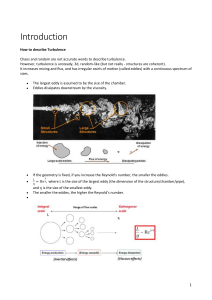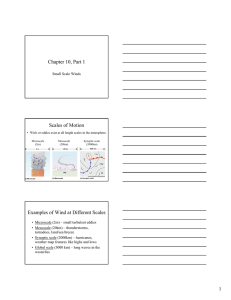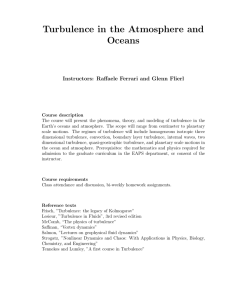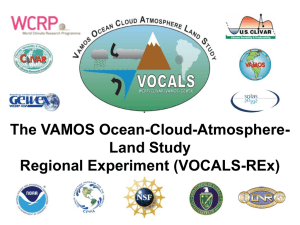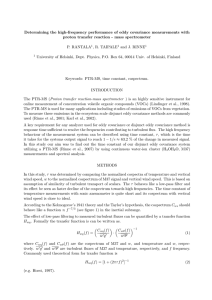Chatper 5: Wind
advertisement
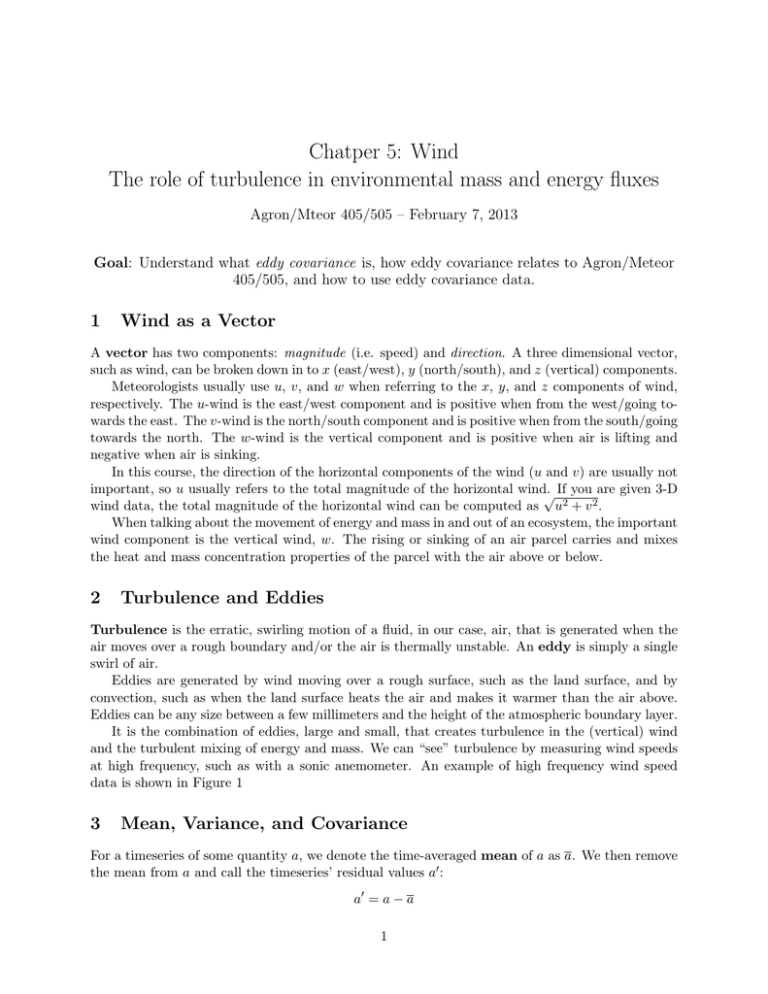
Chatper 5: Wind The role of turbulence in environmental mass and energy fluxes Agron/Mteor 405/505 – February 7, 2013 Goal: Understand what eddy covariance is, how eddy covariance relates to Agron/Meteor 405/505, and how to use eddy covariance data. 1 Wind as a Vector A vector has two components: magnitude (i.e. speed) and direction. A three dimensional vector, such as wind, can be broken down in to x (east/west), y (north/south), and z (vertical) components. Meteorologists usually use u, v, and w when referring to the x, y, and z components of wind, respectively. The u-wind is the east/west component and is positive when from the west/going towards the east. The v-wind is the north/south component and is positive when from the south/going towards the north. The w-wind is the vertical component and is positive when air is lifting and negative when air is sinking. In this course, the direction of the horizontal components of the wind (u and v) are usually not important, so u usually refers to the total magnitude of the horizontal wind. √ If you are given 3-D wind data, the total magnitude of the horizontal wind can be computed as u2 + v 2 . When talking about the movement of energy and mass in and out of an ecosystem, the important wind component is the vertical wind, w. The rising or sinking of an air parcel carries and mixes the heat and mass concentration properties of the parcel with the air above or below. 2 Turbulence and Eddies Turbulence is the erratic, swirling motion of a fluid, in our case, air, that is generated when the air moves over a rough boundary and/or the air is thermally unstable. An eddy is simply a single swirl of air. Eddies are generated by wind moving over a rough surface, such as the land surface, and by convection, such as when the land surface heats the air and makes it warmer than the air above. Eddies can be any size between a few millimeters and the height of the atmospheric boundary layer. It is the combination of eddies, large and small, that creates turbulence in the (vertical) wind and the turbulent mixing of energy and mass. We can “see” turbulence by measuring wind speeds at high frequency, such as with a sonic anemometer. An example of high frequency wind speed data is shown in Figure 1 3 Mean, Variance, and Covariance For a timeseries of some quantity a, we denote the time-averaged mean of a as a. We then remove the mean from a and call the timeseries’ residual values a� : a� = a − a 1 Figure 1: An example of five minutes of vertical wind speeds captured at high frequency (20 Hz) by a sonic anemometer. The erraticness of the plot suggests that the air is very turbulent. For this discussion, we will call a� the variance of a (technically the variance is a�2 ). The covariance of a and b is then a� b� . Covariances are also typically averaged over time, and so we write the covariance of a and b as a� b� . While in class we are modeling the transfer of heat and mass as a function of conductances and gradients, in reality, heat and mass is usually transported by turbulence. We can calculate the vertical flux of anything (say a) by covarying it with w� : Flux of a = w� a� We can write equations for sensible heat flux and latent heat flux this way by taking covariances with temperature and vapor concentration: H = ρ̂cp w� T � λE = λρ̂w� Cv� 2
